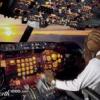
Sign in to follow this
Followers
0

Boeing C-17 Globemaster III makes first airdrop to Anta...
By
Cessnaflyer, in Hangar Chat


By
Cessnaflyer, in Hangar Chat